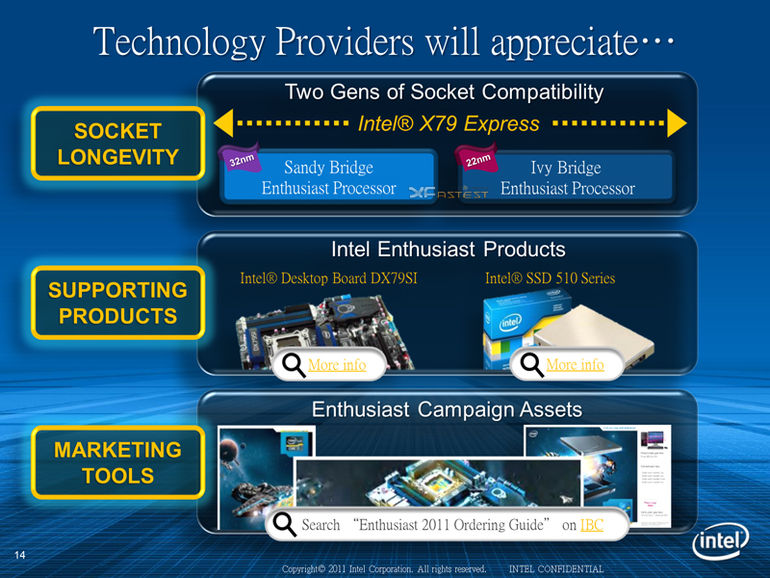Vista was not a great OS it had its issues, but it was not the horrible OS that it became known as. Much of it reputation was gained long before the OS even launched. This was kicked off by a few people writing editorials on features they had (in many cases) not even experienced. These articles were then linked multiple times each time getting paraphrased until it became the “truth”.
I suppose by now you are wondering where I am going with all this and what Vista has to do with X79. Well the two are similar because there are articles that were being linked and passed around telling people to wait for Ivy Bridge and its Socket/Motherboard. We have some good news for you about that though. According to what appears to be a press slide found on the site Xfastest the X79 Chipset and its LGA 2011 socket will support Intel’s upcoming Ivy Bridge E enthusiast part. As Ivy Bridge E will not hit until Q4 2012 at the earliest, you will have a good year of time to enjoy the Sandy Bridge E CPU. 
Now, for those of you that are not looking to drop 600-1000 on a CPU then you can wait on the LGA1155 Ivy Bridge mainstream CPUs that should arrive in Q2-Q3 2012. Both of the Ivy Bridge flavors are part of the “tock” part of Intel’s tick-tock CPU schedule. This means that while Sandy Bridge was a completely new architecture, Ivy Bridge will be primarily a Die Shrink moving from 32nm to 22nm. This is still a good thing as it means lower power consumption, higher clock speeds and better performance. That is as long as the leakage that happens when you shrink your process can be taken care of properly, but that is for another article.
Source and Image XFastest
Discuss in our Forums
News
Ivy Bridge E CPUs will be compatible with X79 Motherboards
- Details
- By Sean Kalinich
- Hits: 4105
 When the X79 motherboards hit the scene many people were not interested because they were looking forward to Ivy Bridge. As I wandered around the internet I saw multiple comments telling people not to bother with the new Sandy Bridge E CPUs because of this very thing. How much impact these comments had I really do not know, but what I do know is that a general consensus on the internet can be disastrous for sales. If you do not believe this just take a look back at Windows Vista.
When the X79 motherboards hit the scene many people were not interested because they were looking forward to Ivy Bridge. As I wandered around the internet I saw multiple comments telling people not to bother with the new Sandy Bridge E CPUs because of this very thing. How much impact these comments had I really do not know, but what I do know is that a general consensus on the internet can be disastrous for sales. If you do not believe this just take a look back at Windows Vista.



